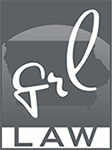Is your house located in a FEMA special flood hazard area or flood zone? If so, were you notified of that fact before making your decision to purchase your home?
Unfortunately, this is a question that is not asked by many people until after disaster strikes. The recent flooding in Mason City, Iowa City, Cedar Falls, Waterloo, Des Moines and throughout the State of Iowa, will likely have many homeowners asking these very questions. The FEMA flood hazard area is normally those areas within the 100 year flood way fringe as determined by FEMA (Federal Emergency Management Agency). Flood maps with this information can readily be obtained through FEMA or even the County Department of Public Works or the City depending upon where the property is located. Many builder plat maps will also note the 100 year flood way fringe.
In the unfortunate event that property is in a FEMA flood hazard area what if anything does that mean? There are a number of consequences to a property being located within a flood zone. First, and foremost, the property is at risk to flood. Second, if any portion of the structure or building is in the flood hazard area, federal law mandates flood insurance for the structure. If the structure is damaged by a flood and there is no flood insurance then federal aid is not likely to be available to the home owner. Third, there are extensive rules and regulations surrounding the building of improvements in flood zones. For example, Polk County will not permit any sort of a fence to be built on the property of a Des Moines home located in a flood zone because it could end up obstructing water flow in the event of a flood. There are also significant restrictions on building any "permanent" structures in those areas, most of which are not permitted.
So, what happens if it turns out that the property and/or structure is located within a FEMA flood hazard area and you either were not told of that fact or were misinformed? In such an event, there are at least three possible parties that may be held responsible for damages incurred. Both Iowa state and federal law require a number of parties to a real estate transaction to disclose to a potential home buyer that the home and/or property is located within a FEMA flood hazard area or flood zone. Additionally, industry standard of care requires that due diligence be used to determine whether property to be sold is located with in a flood zone and if it is so determined, that the potential buyers be notified of that fact before the sale is completed. The three most likely responsible parties are:
1. The Seller – the seller has a duty to accurately complete a Written Seller Disclosure that must be provided to the buyer prior to any offers being accepted. This disclosure requires the seller to disclose whether the property is in a flood hazard area;
2. The Appraiser – Part of a real estate appraisers standard of care requires that they make an independent inquiry as to whether the property is located within a flood hazard area; and
3. The Bank – Federal law requires that prior to granting a mortgage on residential real estate property, the bank must complete its own flood determination and may not issue a mortgage without proof of flood insurance, if any part of the structure is located in a flood hazard area.
If a homeowner determines that their residence is indeed located within a flood zone and any or none of those three disclosure requirements were not met or were incorrect, a potential civil cause of action against the responsible party may exist.
Please see following posts for specifics on each required disclosure.
Seller Disclosures Real Estate Appraiser Disclosures Mortgage Lender & Bank Disclosures

